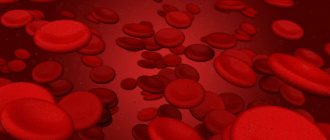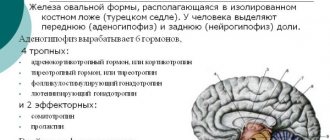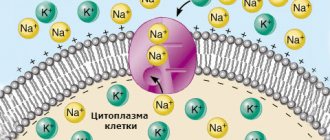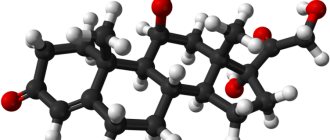- discharge from the female genital organs,
- attacks of nausea,
- urinary incontinence,
- increased fatigue (occurs only when the nervous system is damaged).
Implicit signs of pinworm (roundworm) infection include a decrease in the effectiveness of vaccinations: the disease leads to a failure in the process of developing immunity.
Parasites that can live in the human body
Classification of parasites according to their type:
- Giardia,
- opisthorchis,
- echinococcus,
- toxocara,
- trichinella,
- roundworms.
For representatives of some professions (for staff of public catering establishments, children's institutions), analysis for worm eggs is mandatory when filling out health certificates. Children undergo the same analysis upon admission to kindergartens and nurseries or to the sports section.
- A classic test for worms living in the gastrointestinal tract is a stool analysis and scraping of the mucous membrane from the rectum.
- But there are several options for more effective blood tests for parasites, according to purpose and method.
Indications for analysis
A blood test for helminths is primarily prescribed based on the patient’s symptomatic complaints:
- intense bowel movements (diarrhea);
- reflex release of stomach contents (vomiting);
- weight loss without changing diet;
- painful digestion (dyspepsia);
- subfebrile (3738C) and febrile (3839C) body temperature;
- flatulence and belching;
- pain in the abdominal area;
- polyphagia (increased appetite);
- allergic skin manifestations;
- hypoactivity against the background of an unstable psycho-emotional state.
The study is included in the list of tests, the results of which must be presented upon the child’s admission to school or preschool educational institution. Testing for worms is mandatory:
- medical personnel;
- kindergarten teachers and nannies;
- workers of trade and public catering enterprises;
- livestock breeders.
Testing for helminthiasis is carried out in children during epidemic outbreaks of parasitosis in kindergartens and educational institutions.
The doctor may order a test for possible parasite infection based on the results of a general clinical analysis (CCA) of the blood, in which the levels of eosinophils and leukocytes significantly exceed the established norms.
Helminthiasis is more often recorded in children than in adults, therefore, for preventive purposes, it is recommended to test the blood for the presence of parasites in a child after a summer holiday.
Classic studies on worms
A classic test for worms living in the gastrointestinal tract (gastrointestinal tract), for example, pinworms, roundworms, is a stool analysis and scraping of the mucous membrane from the rectum. But a one-time stool test may not show positive results, so it is advisable to do it three times.
- To analyze feces and scrapings, the histological coprogram method is used (viewing sections of material under a microscope). The effectiveness of the study is about 20%, because the probability that eggs or larvae of parasites will get into the analyzed material is low.
- Controversial studies for the presence of helminths, protozoan parasites and fungi in the body are electroacupuncture methods. Their essence is to obtain results by measuring the bioelectric reactions of active points with electrodes. For this purpose, Oberon or Imedis devices are used. Many doctors view these studies with skepticism.
- The most informative test for parasites is a blood test.
Bovine and pork tapeworm
Bovine and pork tapeworms are generally characterized by the same symptoms as most other species. Patients experience:
- headache;
- nervous disorders, insomnia;
- disruption of the gastrointestinal tract, manifested in the form of diarrhea, constipation;
- pain localized in the abdominal cavity;
- decreased appetite.
A clear sign of infection of the body with these parasites is the release of the helminth through the anus or along with the feces.
Types of blood tests for parasites
There are several options for blood tests for parasites: according to purpose and method. Each of these methods has its own advantages and disadvantages. Depending on the technique used, there are the following types of blood tests:
- ELISA or enzyme-linked immunosorbent test;
- PCR or polymerase chain reaction;
- Hemoscanning;
- Serological blood test.
Basic concepts about parasites
Parasites are pathogenic microorganisms that ensure their own viability by absorbing nutrients from the body of another biological species. Protozoal infections in humans are caused by two main types of parasites:
- protozoa or unicellular;
- helminths or worms (nematodes, cystodes, trematodes).
Ways pathogens enter the human body:
- household - through infected household items, hygiene items, gadgets, etc.;
- fecal-oral – in case of non-compliance with hand hygiene rules;
- alimentary (aka food) - together with contaminated products, dirty water;
- contact – infection from carriers of parasites (people, birds and animals)
- wrapped - through mucous membranes and skin pores;
- transmission - through the blood (including intrauterine, from mother to child).
In some cases, airborne infection is recorded. Helminths have a high survival rate, which is ensured by:
- adaptive abilities;
- increased fertility;
- long life cycle;
- production of antienzyme substances;
- resistance to external influences (helminth eggs can persist for a long time).
In addition, some types of worms are capable of mutating, that is, deceiving the human immune system, which produces antibodies to parasites. The main cause of infection with protozoal infections is non-compliance with sanitary standards and rules of personal hygiene.
ELISA, analysis for antibodies and immunoglobulins
This analysis is based on the body’s immune response, the level of its protective reaction to parasite invasions. When, in response to a pathogen or simply a foreign protein, the human body forms antibodies in its blood, they are called immunoglobulins.
- Using the results of ELISA, you can determine the presence of helminths in the body and their type. The accuracy of the study is much higher than stool analysis.
- The method is based on counting antibodies in the body to a particular type of parasite, determining their connection with foreign antigens (immune response) and the enzymatic reaction of the body.
- Antibody-antigen complexes indicate the presence of infection.
- A blood test using the ELISA method has an accuracy, according to various experts, from 60% to 90%, even with a low level of invasion.
- The advantage of the method, in addition to a high level of accuracy, is that the enzyme immunoassay can monitor the dynamics of the disease over time.
Danger of parasites
If the number and size of parasites are small, their presence may go unnoticed for a long time, but the rapid reproduction or growth of parasites and their movement throughout the body during their life cycle often causes the development of serious health problems.
For example, roundworms that accumulate in the intestines can cause constipation and obstruction. Bovine tapeworm grows up to several meters in length and seriously damages the digestive tract, depriving the owner of nutrients and vitamins. Echinococcus forms cysts in internal organs, including the brain, liver, and lungs. Rupture of such a cyst may occur unexpectedly, after a minor injury or during an examination. The contents of the cyst can cause anaphylactic shock or collapse. Trichinella larvae feed and live in the muscles, gradually destroying them. According to WHO, parasitic diseases account for about 14 million deaths worldwide per year.
Indicators of ELISA blood test for parasites
The test for the presence of antibodies looks like a set of symbols indicating these antibodies or they are called immunoglobulins.
- A total of 5 of them were studied - IgG, IgA, IgM, IgE IgD.
- In practical medicine, the first four immunoglobulins are important.
IgM is the main marker in the acute phase of the disease
IgM is an immunoglobulin that appears in the acute phase of the disease, indicating the onset of infection.
- appears in the blood on the fifth day,
- detected by analysis after 6 weeks.
- Then it begins to quickly disappear.
IgE is a marker, an indicator of parasite infection
IgE - immunoglobulin indicates the presence of parasites or allergies in the human body.
- is a marker of processes associated with allergies,
- circulates little in the blood, is based in mucous membranes, macrophages and basophils,
- participates in immune responses to infection by parasites.
IgG is a marker of past disease and immunity
IgG is an immunoglobulin that appears during the disease process.
- IgG persists even after treatment, for some infections for life, for example, measles, rubella and others.
- The detection of immunoglobulins G in the blood indicates that the body has already encountered this infection, this particular pathogen, before.
Result of ELISA analysis for immunoglobulin variants
Based on different combinations of pros and cons in a blood test for parasites, the following conclusions can be drawn:
- absence of infection – all antibodies with a minus;
- acute stage – IgG (+/-), IgA (+\-), IgM (+);
- chronic form – IgG (+/-), IgA (-), IgM (-);
- presence of immunity – IgG (+), IgA(-), IgM(-);
- exacerbation of a chronic disease – IgG (+), IgA(+), IgM(+)
- If the disease is identified and treated, then negative values of all antibodies will be achieved only six months after the course of treatment, sometimes after 1-2 years.
Test for identifying worms at home based on symptoms
Some people do not have time to go to the doctor and take the necessary tests. How to understand that you have worms without going to the doctor. There is a check - a test for worms, which anyone can take without leaving home. It is enough to honestly answer the list of questions:
- Does itching in the anus bother you?
- Are there skin rashes and inflammations?
- Do you experience frequent nausea, sometimes accompanied by vomiting?
- Is your sleep disrupted? Do you feel groggy in the morning?
- Do you worry about flatulence and bloating?
- Do you experience frequent stomach upsets?
- Do you have a bitter taste in your mouth?
- Are there any enlarged lymph nodes?
- Are you worried about constant aches and pains in your joints and muscles?
- Do you often grind your teeth while sleeping?
If you answered yes to 7 or more questions, there is a high probability of helminthic infestation. But don’t rush to shout in horror: “I have worms!” The presence of these symptoms may indicate other diseases. Therefore, you need to consult a doctor who will send you for examination to establish a diagnosis.
Take a test for worms
Helminths can affect not only the intestines, but also the lungs, pancreas, and accumulate in the bile ducts, liver, heart and brain. Their activity affects the immune system, as parasites consume vitamins and nutrients, depriving the body of resources for recovery. The release of toxic waste products provokes chronic poisoning, which is expressed in skin symptoms, weakness, damage to organs and systems.
Manifestations of helminthic infestation are varied. At first, the disease does not reveal itself, then itching in the rectal opening and discomfort appear, which is typical for the last stage, when the parasites have spread to other organs. Infection with worms affects the entire body:
- lung damage leads to the appearance of growing fluid-filled lumps that affect respiratory function;
- infection of the spleen and other immune organs leads to frequent colds, fungal and bacterial infections;
- the penetration of parasites into the nervous system affects a spontaneous increase in temperature and hormonal disorders;
- parasites in the muscles cause inflammation and constant pain throughout the body.
The main signs of the presence of worms:
- teeth grinding and sleep disturbances;
- chronic fatigue and anxiety;
- frequent runny nose and bronchitis;
- skin itching and urticaria;
- bloating, diarrhea, digestive disorders;
- brittle hair and nails.
Women with a parasitic infection suffer from frequent cystitis, fibroids, ovarian cysts, and painful menstruation. Men - adenoma, impotence, polyps in the bladder. In a child, helminthic infestation manifests itself as lethargy, capricious character, and restless sleep.
Reliability of ELISA analysis
The ELISA method provides a 90% confidence level for diagnosing infection with roundworms, pinworms (enteriobiosis), toxocara and others, which cause the formation of IgG immunoglobulin in the blood in large quantities.
- Giardiasis can be determined by the separate and total (OPd) value of the level of antibodies in the blood.
- An OPD value of more than 1 indicates that there is or was infection,
- with a value of less than 0.85 there is no lamblia.
- If the value is in the interval, then it is advisable to repeat the analysis after 2 weeks.
This method is characterized by a number of weaknesses. The analysis allows you to determine the level of antibodies produced in the body to neutralize helminths, and not the worms themselves.
- Therefore, it is possible to obtain false positive and false negative results.
- This also happens when patients take medications,
- metabolic disorders and the presence of parallel ongoing chronic diseases.
What parasitic diseases can be detected using tests?
Opisthorchiasis
The disease is caused by the opisthorchis worm, which chooses the human liver, gallbladder or pancreas as its habitat. Infection occurs after eating raw or dried fish that is infected with opisthorchis larvae.
It manifests itself as severe pain in the epigastric region and in the right hypochondrium, nausea, vomiting, dizziness, weakness, headaches, enlarged liver and its soreness.
Trichinosis
The disease is caused by Trichinella. Develops when eating poorly cooked or fried meat. It manifests itself as headache, muscle pain, swelling of the face (especially eyelids), allergies and periodic increases in temperature.
The patient's blood is examined for the number of eosinophils (white blood cells responsible for binding foreign proteins circulating in the blood) and signs of anemia.
Ascariasis
The roundworm worm can reach 40 cm in length and lives in the intestines. The larvae can settle in the lungs, liver, and heart. There are cases where these parasites come out through the mouth, nose or even ears. It can manifest itself as atopic dermatitis, neurodermatitis, allergies, chronic bronchitis, sinusitis, hepatitis, mycoses. And also frequent pain in the navel area, loss of appetite, dizziness, fainting, and poor sleep. Infection occurs when personal hygiene rules are not observed and when eating unwashed vegetables and fruits.
Toxocariasis
The helminth Toxocara parasitizes in humans in the form of larvae that occupy the liver, lungs, heart, kidneys, brain, and eyes. There are known fatal cases of damage to the heart and nervous system.
Manifested by allergic reactions, bronchial asthma, fever, cough, enlarged liver, damage to the organs of vision with the possible development of blindness.
Infection occurs through dirty hands and contaminated food.
Echinococcosis
With this type of disease, cysts formed from parasite larvae form in the liver, lungs and other internal organs of a person. The presence of cysts in the liver is manifested by pain in the right hypochondrium, weakness, malaise, fatigue, decreased activity, and sometimes allergic reactions. When the cyst is located in the lung, coughing and shortness of breath appear. You can become infected with echinococcosis if you do not maintain personal hygiene.
Giardiasis
Parasite analysis. Giardia are single-celled microorganisms with several pairs of flagella that live in the lumen of the human small intestine. The disease is manifested by diarrhea, nausea, vomiting, changes in skin color and structure. Infection occurs through consumption of food and water contaminated with Giardia cysts.
For the most complete diagnosis, you may need to take a stool test to detect helminth eggs, as well as undergo other types of tests. If you have pain in the epigastric region, it is also advisable to consult a gastroenterologist, test your stool for Helicobacter Pilori antigen, perform an ultrasound of the abdominal organs, and do a gastroscopy.
General blood test, changes due to parasite infection
You can indirectly suspect the presence of an invasion by doing a general blood test. Since the presence of worms affects internal organs, their waste products enter the blood, changing its composition. Partial list of results of the influence of invasion on blood parameters:
- increased hemoglobin;
- abnormal ESR indicators;
- excess of eosinophils by 20%;
- glandular anemia.
If there are no other reasons for such deviations, it is advisable to include a special blood test for parasites, ELISA, or PCR in the diagnostic program.
Classification of methods for diagnosing helminthiasis
A muscle biopsy may be used to evaluate the patient.
- Macroghelminthoscopy (the presence of worms is visible in preparations with the naked eye): examination of feces (a technique in which feces are examined for the presence of worm eggs is called ovohelminthoscopy);
- settling methods.
- native smear;
- immunological methods;
Polymerase chain reaction, PCR analysis
The PCR method, or polymer chain reaction, is considered fundamental in molecular diagnostics and is one of the most modern and accurate for diagnosing the presence of parasites in the body.
- It involves detecting traces of DNA and RNA belonging to parasitic life forms.
- The essence of the polymerase reaction is to process blood in such a way as to copy and multiply DNA and RNA of foreign organisms to a concentration that allows them to be identified.
ART (vegetative resonance testing)
Vegetative resonance testing (VRT) is today the most effective and accurate diagnostic measure for detecting and determining the type of worms.
Specialists can not only make a diagnosis with high accuracy, but also indicate which type of worms are parasitizing in the patient’s body based on extremely weak electromagnetic oscillations of a wide range of frequencies, inherent not only to every living organism, but also to bacteria, viruses, fungi and parasites.
The specific spectrum of these frequencies is called the electromagnetic portrait. It changes in the affected organ, and based on this, it is possible to identify the specific causative agent of a particular disease.
However, due to the high cost, this type of diagnostics is not very popular.
Serological blood test
This analysis uses blood serum as a source of information.
- Immunogenic antibody responses to parasite antigens are studied.
- The analysis allows us to identify a large number of parasitic forms, but does not allow us to determine the stage of invasion.
- Like the ELISA method, serological analysis is indirect for diagnosis.
- If the OPD value is high, it is advisable to additionally take a stool test.
When and who should be examined for helminthiasis?
The following categories of persons are subject to examination for helminthiasis:
- 1Children of early, preschool and school age, organized or unorganized in groups, without taking into account symptoms, at least once a year. This recommendation is due to the high incidence of so-called geohelminthiases (pinworms, roundworms, etc.) among children. This is largely due to a lack of self-care skills, non-compliance with personal hygiene rules, playing in the sand and earth, close communication and sharing toys.
- 2Adults working with children, medical workers, sellers, employees of catering establishments and food manufacturing enterprises at least once a year for the purpose of medical examination.
- 3Persons of any age who have typical symptoms of any helminthic infestation. You can read more about the symptoms in our article about the most common infestations.
- 4Persons of any age who have been in contact with a person infected with enterobiasis, hymenolepiasis. Not all helminth infections are contagious to others; the degree of contagiousness is determined by the life cycle of the helminths; where the life cycle is simple and does not require the change of several intermediate hosts, the risk of infection is always higher (see Table 2).
- 5Persons of any age, if one of the family members has been diagnosed with trichinosis, diphyllobothriasis, opisthorchiasis and some other helminthic infestations. The recommendation is due to the likelihood of co-infection when eating the same food products at home (fish, meat, etc.).
- 6Children and adults suffering from skin and bronchopulmonary allergic diseases (urticaria, atopic dermatitis, eczema, debut of bronchial asthma or newly diagnosed obstructive bronchitis).
- 7Children and adults with anemia, microcytic, normocytic or macrocytic, resistant to traditional therapy.
- 8Children and adults with unexplained eosinophilia (increased levels of eosinophils in the blood). Eosinophilia is often observed in nematodes, trematodes, tissue cestodes, and the level of eosinophils can exceed 15-20%. There is usually a direct relationship between the severity of symptoms and the level of eosinophilia.
- 9Children and adults with unexplained intestinal disorders and symptoms of dyspepsia.
- 10Children and adults with unexplained weight loss, accompanied by increased fatigue, tiredness, decreased concentration, and sleep disturbances. In this case, helminthiases are included in the differential series along with autoimmune pathology, cancer, tuberculosis and other causes.
- 11Testing for helminth infections is necessary for all those traveling to tropical and subtropical countries, as well as those living there for a long time, taking into account endemicity. For example, for those visiting the countries of Southeast Asia, it is advisable to include strongyloidiasis, hookworm, paragonimiasis, clonorchiasis, schistosomiasis, etc. in the diagnostic search.
| Helminthiasis | Contagiousness of infected people to others |
| Enterobiasis | Yes, eggs mature quickly at room temperature |
| Hymenolepiasis | Yes |
| Strongyloidiasis | Yes, the invasive form already develops in the intestines of the old host, infection is possible through contact with the patient’s feces or unprotected sexual intercourse |
| Hookworm | No, the egg must mature in conditions of high humidity and heat until the filariform larva forms |
| Diphyllobothriasis | No |
| Ascariasis | No, subject to personal hygiene rules |
| Toxocariasis | No |
| Opisthorchiasis | No |
| Trichocephalosis | No, subject to personal hygiene rules |
Table 2 - Infectious and non-infectious helminthiases for others
How to take a blood test for parasites
Blood donation for the presence of parasites is carried out in a specialized laboratory. Blood for analysis is taken from the ulnar vein in an amount of 3-5 ml and placed in a dry sterile tube. Before taking the test, it is recommended:
- do not eat for 8 hours;
- in the evening meal, avoid fatty foods and milk;
- do not drink alcohol and carbonated drinks;
- avoid excessive physical activity, physiotherapy, X-ray exposure;
- stop taking medications.
- Drinking plenty of fluids is encouraged.
- The conditions for donating blood for PCR are less stringent, because The degree of satiety does not affect the presence of parasite DNA.
Expanded coprogram
Histological coprogram is a microscopic examination of stool to detect eggs, larvae or traces of adult parasites. Detailed stool analysis is a universal method for detecting intestinal helminths (pinworms, roundworms, hookworms, whipworms).
How to take a stool test. You need to buy a special sterile container at the pharmacy. It is filled to a third of its volume with feces. Before defecation, be sure to urinate so that urine does not get into the sample. The lid of the filled container is screwed tightly.
Biomaterial can be stored in the refrigerator for no more than 8 hours, after which time it is no longer suitable for research. A week before the test, you need to stop taking any medications and avoid fried and fatty foods. On the eve of sampling, you should not put rectal suppositories, drink laxatives or do enemas.
The main disadvantage of the coprogram is low efficiency (about 35%). Helminths do not lay eggs every day. Therefore, a stool test for parasites must be taken three times with an interval of 3-5 days. Detailed results can usually be obtained 4-6 days after delivery.
Symptoms of helminthic infestation
Symptoms are more pronounced in children. It could be:
- Uneven appetite - from overeating to complete refusal to eat;
- Alternately constipation or loose stools;
- Morning toxicosis;
- Skin rashes or paleness;
- Unreasonable increase in temperature;
- Dark circles around the eyes.
If any of the listed symptoms are observed for several days, parents should contact a medical facility to be tested for the presence of helminths in the child. As a rule, parasites spread to other family members. Doctors recommend that if one person is infected, the whole family should be tested.
Adults, unlike children, can be carriers of various types of parasites for a long time without external manifestations. You should be wary if you experience chronic fatigue, problems with the respiratory system, pallor, or joint pain that is not caused by physical activity.
Preparation
Biochemical analysis will become as reliable as possible if preliminary preparation has been carried out for it. It is worth preparing for the blood test in advance; you should not take any medications, alcohol, foods with excessive sugar content, or excessively fatty foods the day before. The test must be taken on an empty stomach - it is forbidden to eat or even drink 8 hours before the sample, for children - at least 3 hours. Also, if we are talking about researching a child, he should be prepared mentally.











